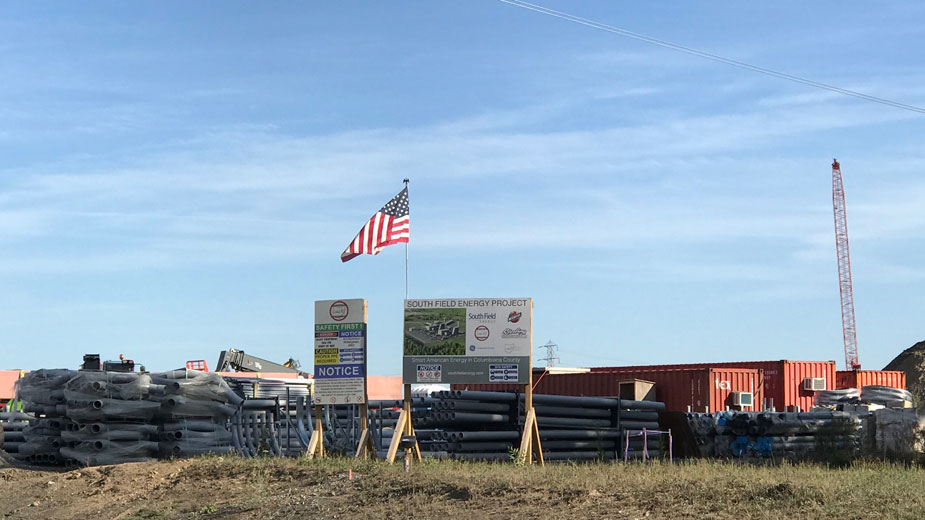Buckeye Water District Fulfills Its Purpose
WELLSVILLE, Ohio – It has been 25 years since a movement to form a charter government in Columbiana County instead brought about a regional water district, which has now expanded to encompass about 15 square miles of the county.
The first meeting of the Southern Columbiana County Regional Water District Board of Commissioners was held in April 1994 with members Peter Russell, Chuck Allison, Chuck Bibbee, Don Duke, Sid Porter, Tom Haugh, Bob Grimm, Bob Lewis and Tom Nohl.
The name was later changed to Buckeye Water District, under which it operates today.
The district came about after county voters twice rejected efforts to change to a charter form of government, says county engineer Bert Dawson.
As part of the investigation into the feasibility of such a move, Dawson and other officials traveled to a county in Virginia where a charter government is in place and is “run like a business,” Dawson says.
“It was more than we planned on doing,” he remembers, noting that county’s charter government included the water and sewer departments but also the safety forces and schools.
While admitting there were “a lot of efficiencies in it,” Dawson says he and the others did not believe Columbiana County taxpayers would support that form of government.
But one aspect was brought back as a possibility: a regional water system.
At the time, Wellsville was experiencing a “multitude of problems” with its water system that included a malfunctioning water plant and low water levels in its reservoir.
The village was under a consent order from the Environmental Protection Agency, faced with paying fines of $5,000 per day, according to current board members, and, ultimately, it decided to form a regional water district under Ohio Revised Code 6119.
The common pleas court had to be petitioned to allow the formation of the district, including setting up bylaws and selecting board members, who represent the county commissioners, Wellsville and the townships involved in the district.
A tie line was built from the water tank at Irish Ridge Road in Calcutta to feed Wellsville’s water tank on state Route 45 because the EPA ordered the village to locate a secondary water source in addition to its failing reservoir.
“It didn’t work,” says current district manager Al DeAngelis, who explains that ultimately led to EPA findings and rulings that resulted in the water district building its own plant on state Route 45.
“When doing the design for the new water plant and raw-water pump station, the board had the foresight to say, ‘Let’s make this big enough to expand,’ and we used a 36-inch line,” DeAngelis says, referring to the main line transporting water from the Ohio River to the plant.
“I had to fight like hell to get that 36-inch line. The board was really split,” recalls Bibbee, who is no longer on the board.
“Part of [the opposition] was the cost, but you always have people who won’t look beyond the end of their nose,” Bibbee says.
“The idea was to expand out through the county to give water to areas that can’t do it themselves,” DeAngelis adds. “If Wellsville had had to build a new water plant, the taxpayers would have had to pay high costs.”
The plant, pump station, transmission line and tank cost $38 million, paid for with a $14 million U.S. Department of Agriculture grant and financing by the district.
The result of board members’ foresight was a plant that currently has the capacity to produce 4 million gallons of water per day but with the capability of producing another 30 million gallons per day with slight changes.
One million gallons per day are currently produced at the plant, with water supplied not only to Wellsville but the federal prison at Elkton and Columbiana County Career and Technical Center in Lisbon, the village of Salineville as far as the Carroll County line, Southern Local and Beaver Local school districts and Beaver Creek State Park, with lines being installed to the Frederick Heights housing development outside Calcutta.
Goals include providing water service to Elkrun Township, Rogers and Negley, as well as installing a 20-inch line along state Route 45 to tie into the main line so more than one feed will be available.
Despite these expansions, customers’ rates have not increased since 2008, DeAngelis says.
Helping the district’s finances is the South Field Energy power plant under construction on property purchased from the Buckeye Water District.
Plans call for installing an 18 million-gallon reservoir for use by the plant, with about 8 million gallons of raw water expected to be pumped per day. Although the water will not be treated, South Field will pay BWD the cost of electricity to pump the water to the plant, DeAngelis says.
Referring to the district’s growth over the past 25 years, DeAngelis says, “That was the point of the water district, to support rural areas. It’s doing what it was formed to do.”
Today, the board consists of Bob Wines, Mike Lynn, Rick Williams, Terry O’Hara, President Mike Ryan, Don Harris, George Kosko, Dave Dawson and Roy Dray, with attorney Fred Emmerling serving as district legal counsel as he has since the inception of the district.
Pictured: Once it opens, the South Field Energy plant will pay the Buckeye Water District to pump water to the plant.
Copyright 2024 The Business Journal, Youngstown, Ohio.



